As businesses migrate critical operations to the cloud, defence remains a top priority. Whether it's AWS, Microsoft Azure, or Google Cloud Platform (GCP), each provider offers robust safeguard capabilities. However, relying on a single control is never sufficient in the face of evolving threats.
Enter layered security, or "defence in depth”, a strategic approach where multiple divisions of safeguard controls are implemented to protect systems. This model ensures that if one coat fails, others are in place to detect, delay, or prevent attacks.
This article examines how layered security is implemented across AWS, Azure, & GCP, outlining each guard cover, specific threats it mitigates, and potential risks associated with not implementing that segment.
The Power of Layered Protection: Why One Line of Defence Isn’t Enough
Layered security is not about redundancy; it's about resilience. No single shield control is flawless. Attackers evolve, and vulnerabilities can emerge unexpectedly. A multi-coated approach ensures:
• Redundancy of protection in case one control fails.
• Delayed progression for attackers, as they will have multiple barriers to break
• Comprehensive visibility, helping detect anomalies early.
• Coverage across full attack surface, including physical, network,
application, and identity layers.
Cloud providers like AWS, Azure, & GCP have designed their services with layered protection in mind, offering tools at every stage to implement and manage these tiers effectively.
Layer 1: Physical Security
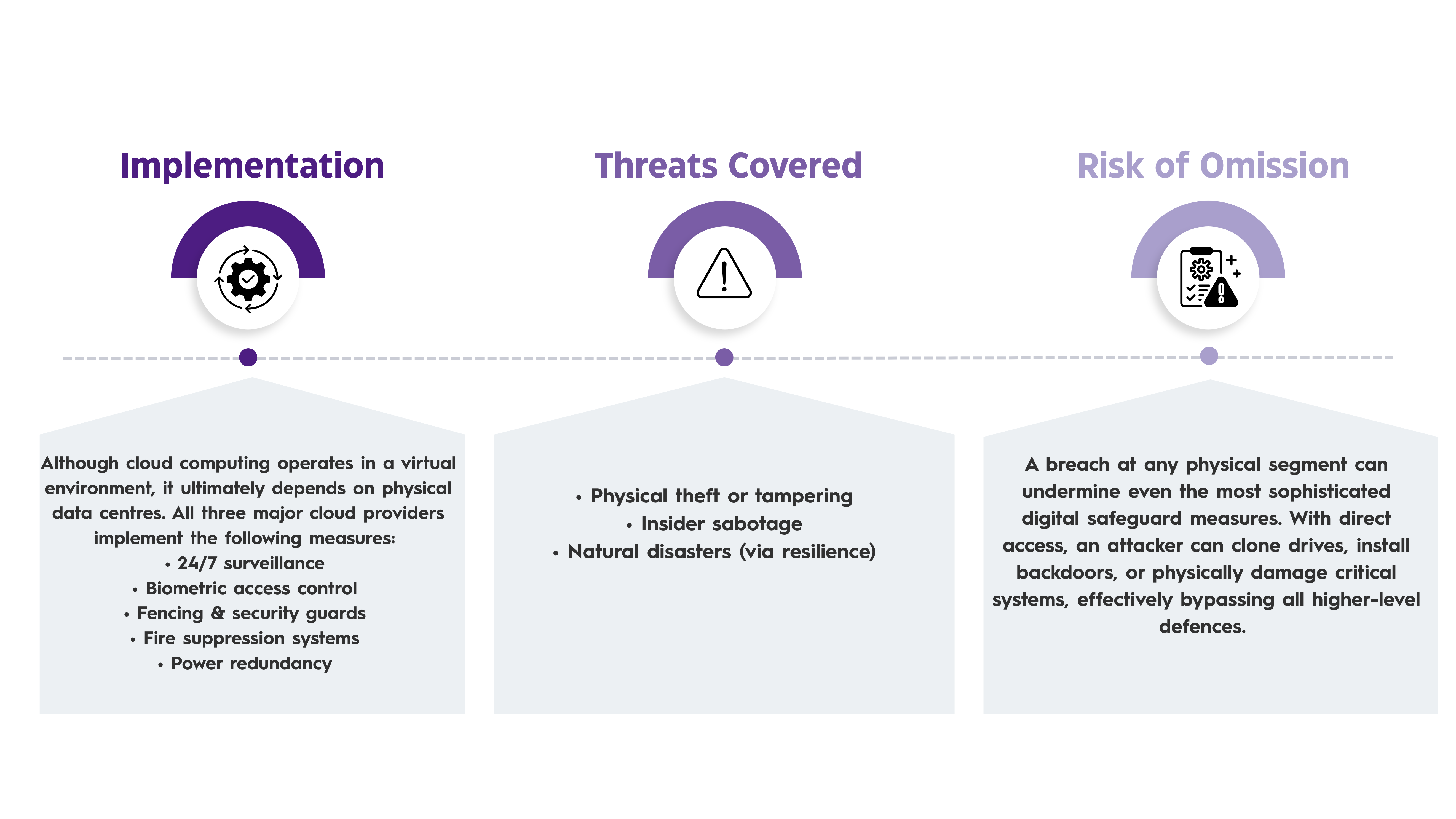
Layer 2: Network Security 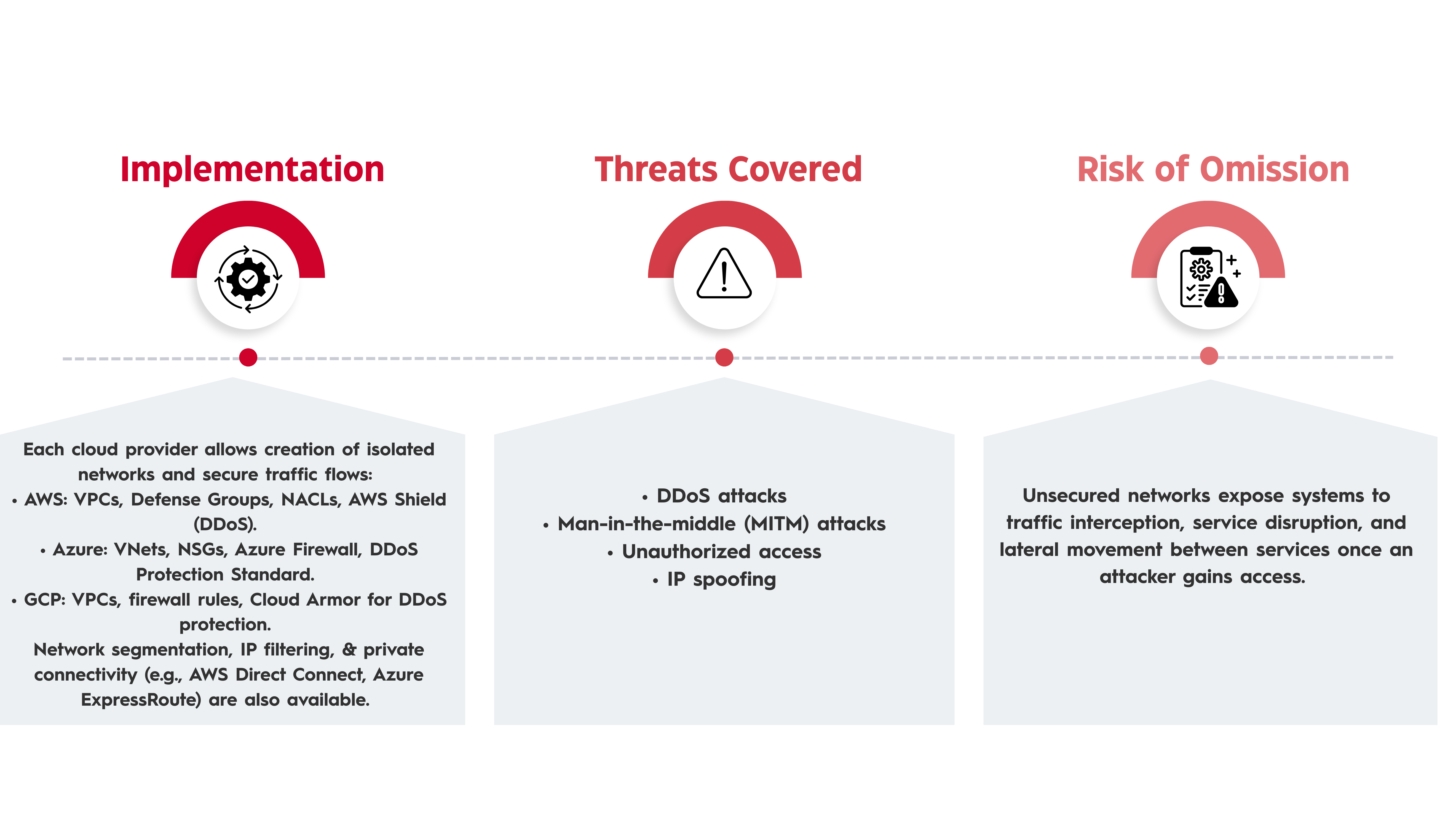 Layer 3: Identity & Access Management (IAM)
Layer 3: Identity & Access Management (IAM)
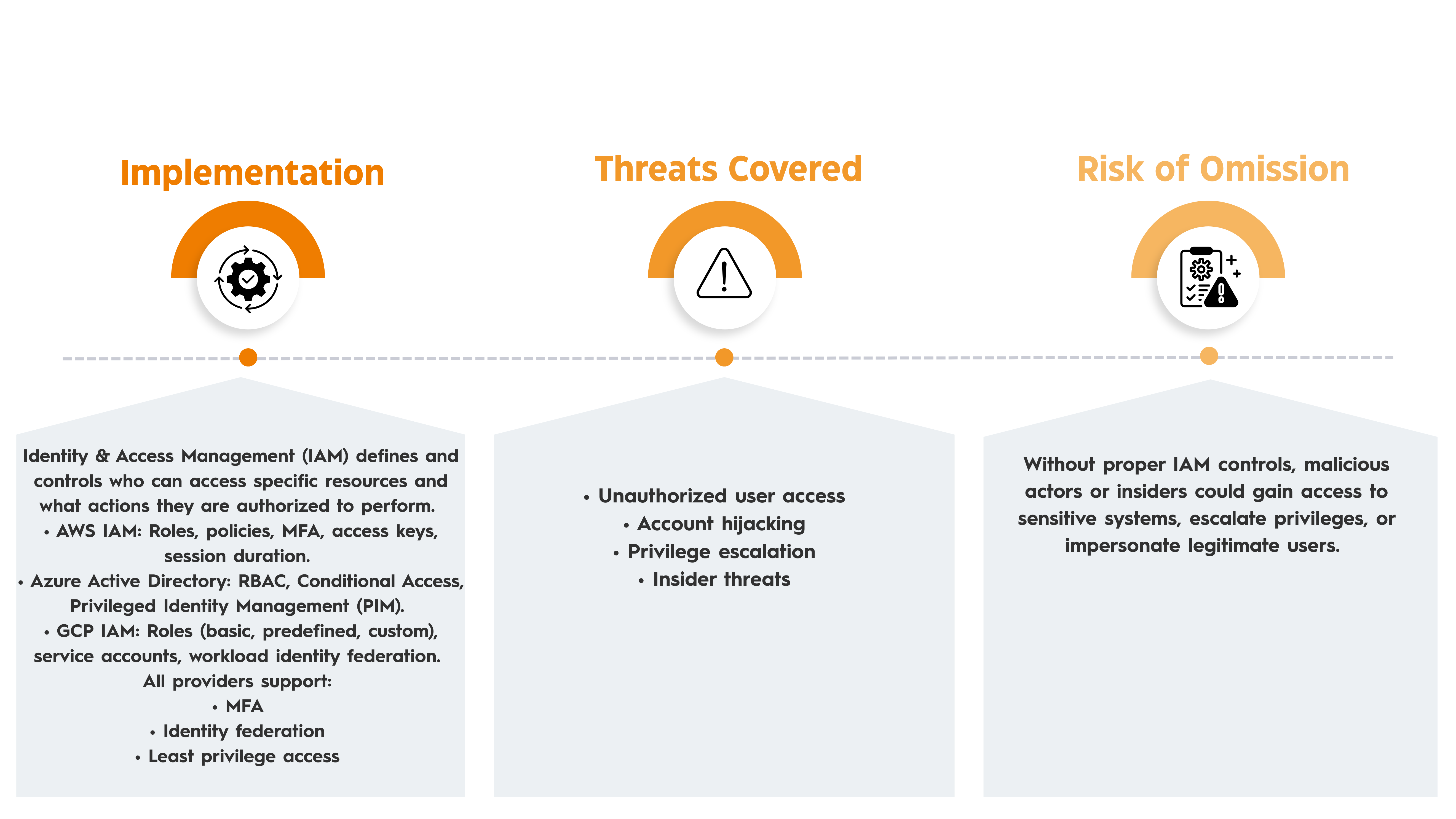 Layer 4: Application Security
Layer 4: Application Security
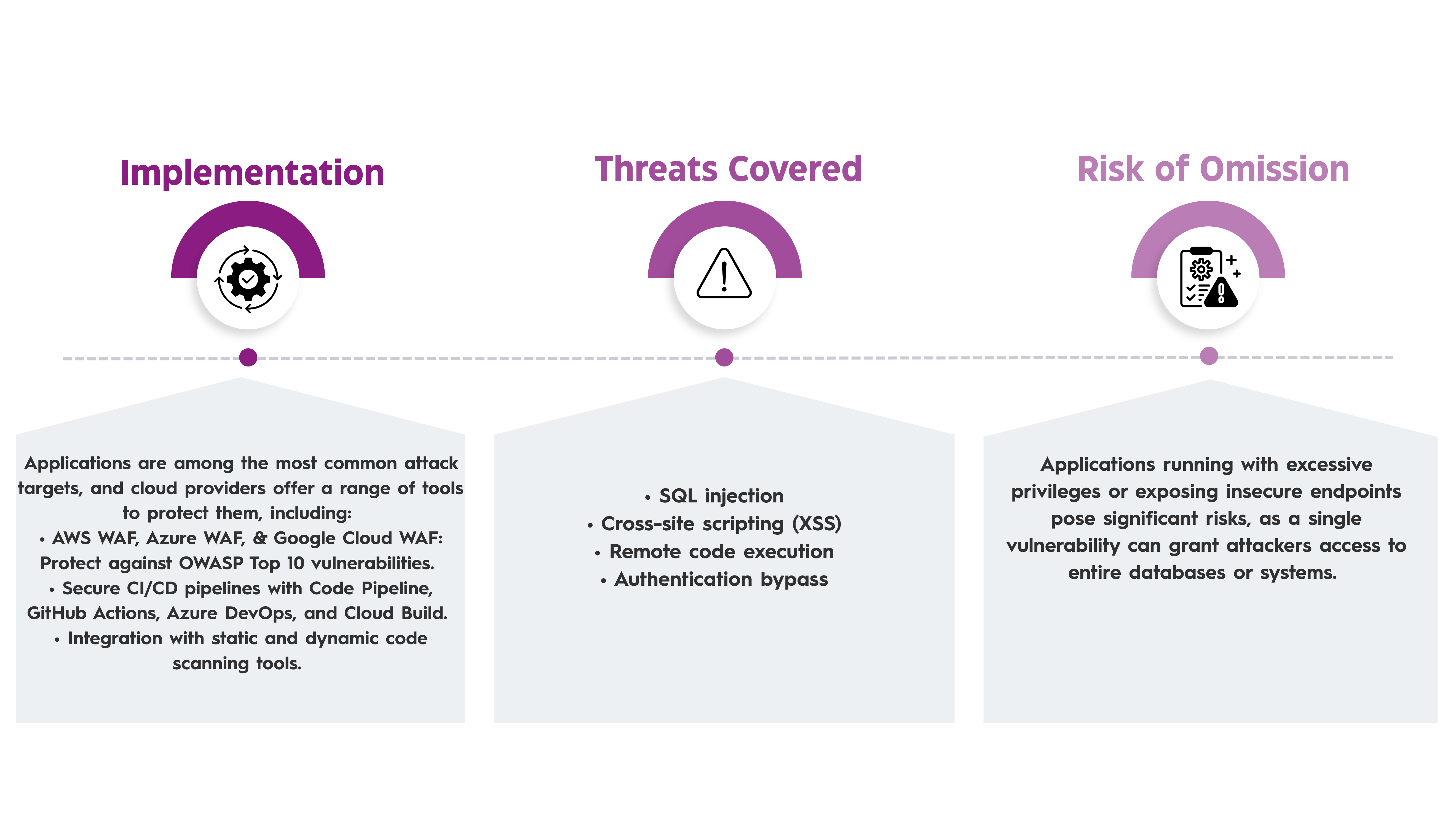 Layer 5: Data Security
Layer 5: Data Security
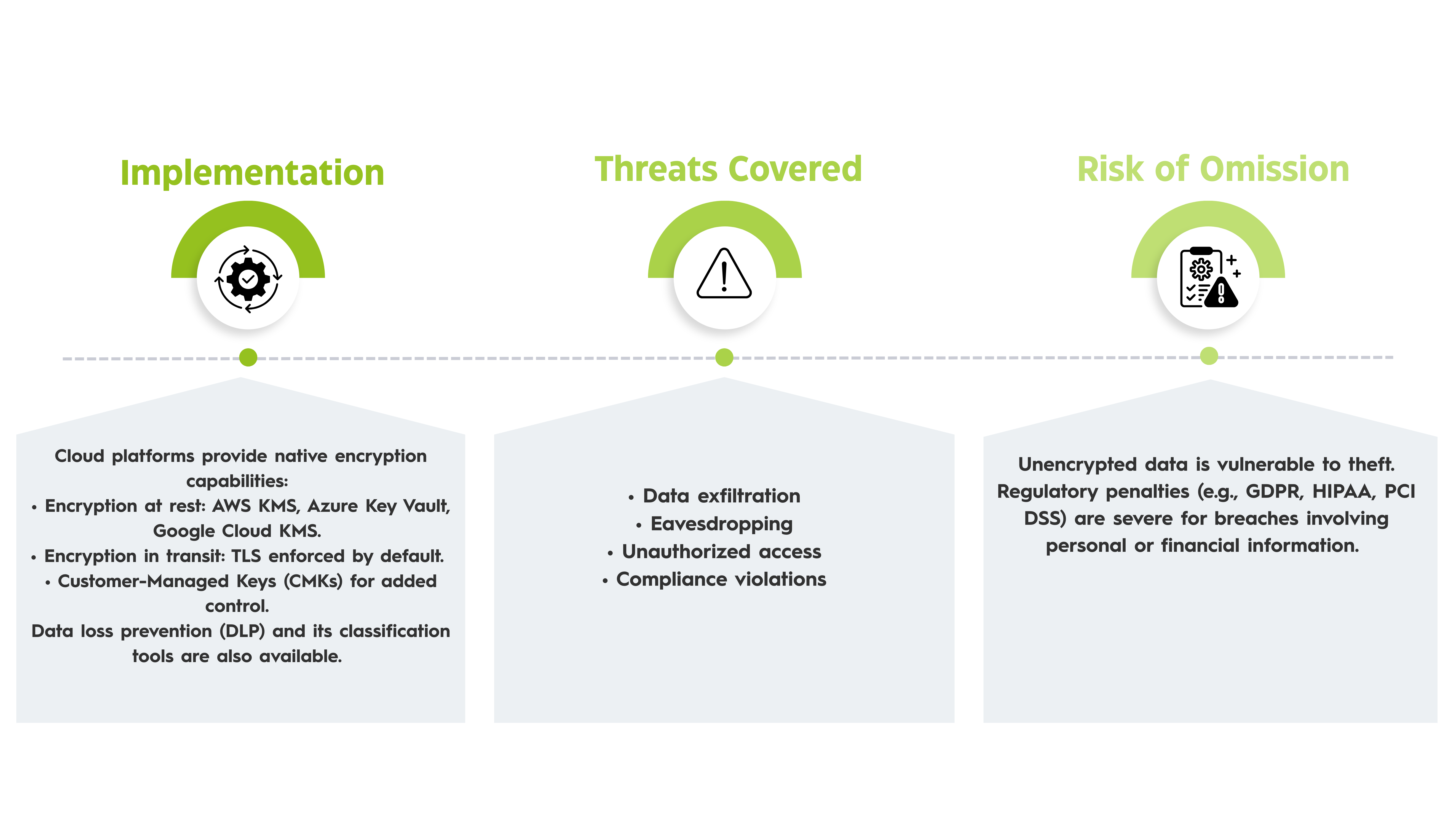 Layer 6: Monitoring and Logging
Layer 6: Monitoring and Logging
 Layer 7: Compliance & Governance
Layer 7: Compliance & Governance
An attacker exploits a known vulnerability in a web application, gains unauthorized access through overly permissive IAM policies, and downloads sensitive information. With logging disabled, breach remains undetected for weeks, illustrating how absence of even a single division can exponentially increase overall risk.
The Bottom Line: Why Layered Protection Matters
Cloud safety is not a checkbox; it's a continuous strategy. AWS, Azure, and GCP each provide a comprehensive suite of tools that enable organizations to build resilient, multi-segmented safeguard architectures. Each division, from physical infrastructure to data safety, serves a distinct purpose in defending against evolving threats.
By adopting a layered defence approach:
• Organizations ensure resilience against diverse attack vectors.
• Security becomes proactive, not reactive.
• The risks of downtime, data loss, and regulatory non-compliance are substantially reduced.
In a world where cyber threats are relentless and ever-changing, layered cloud defence isn’t just better, it’s essential.